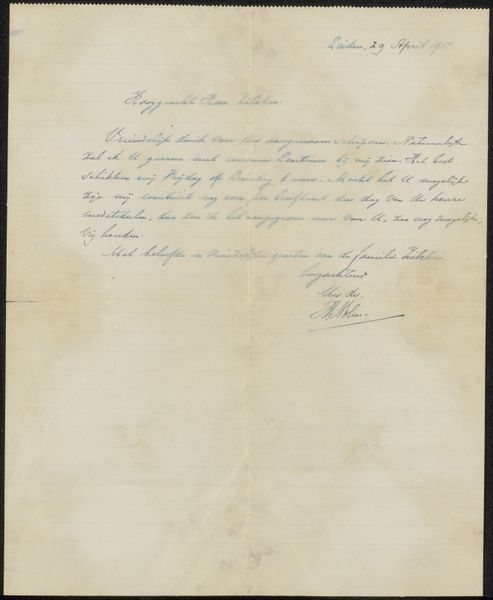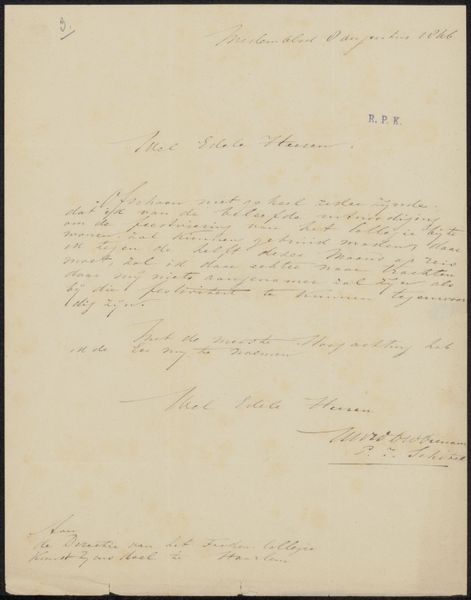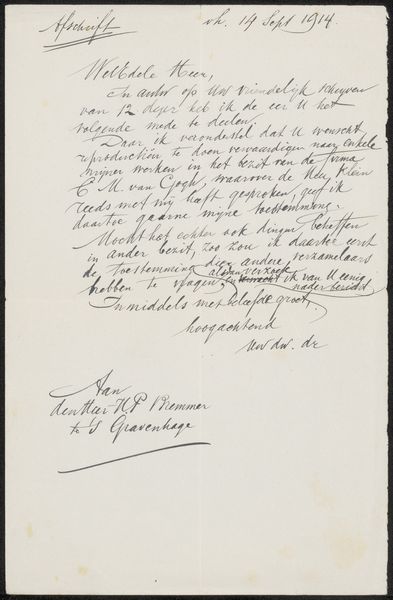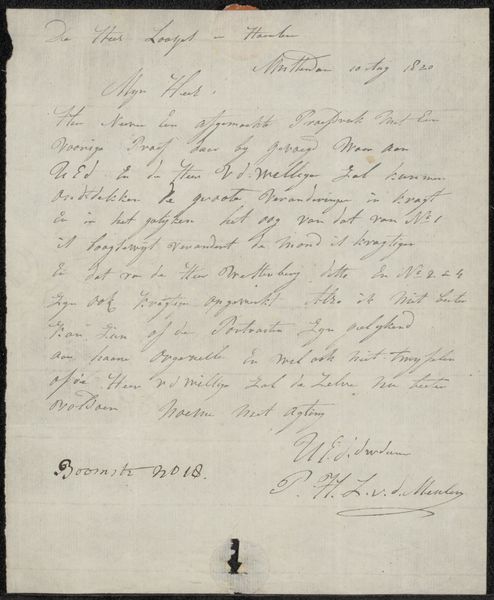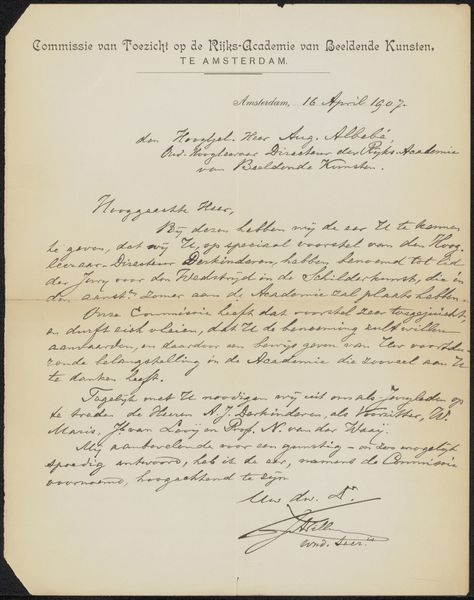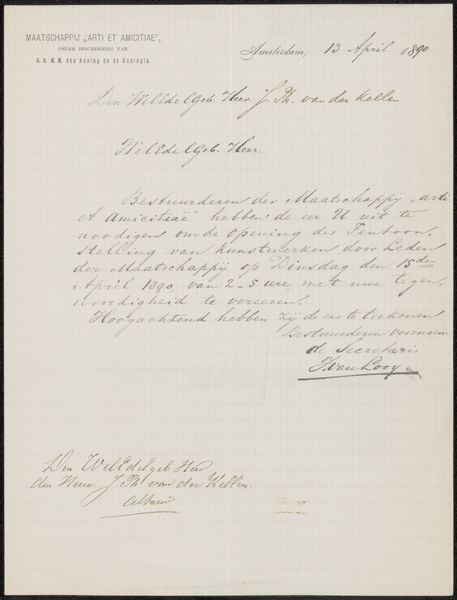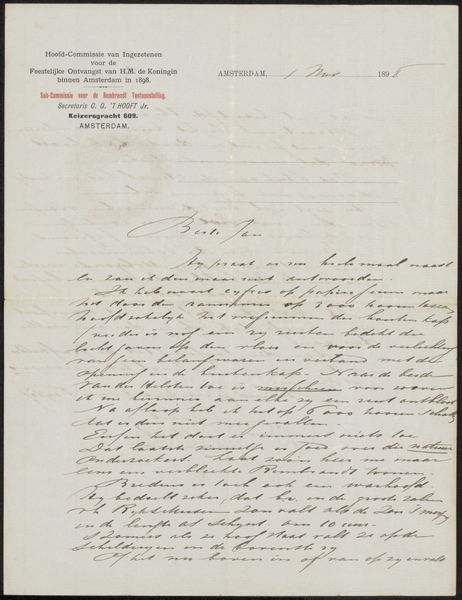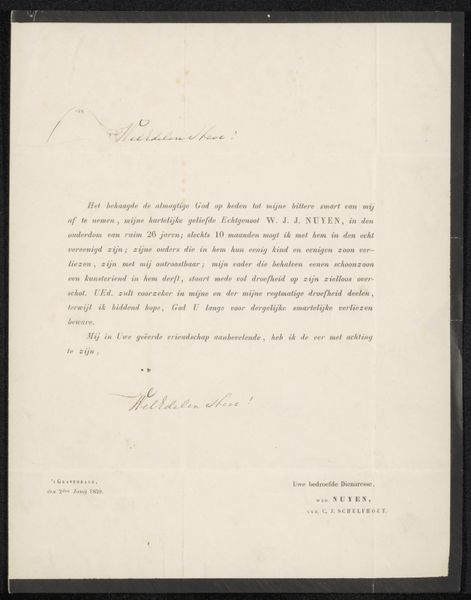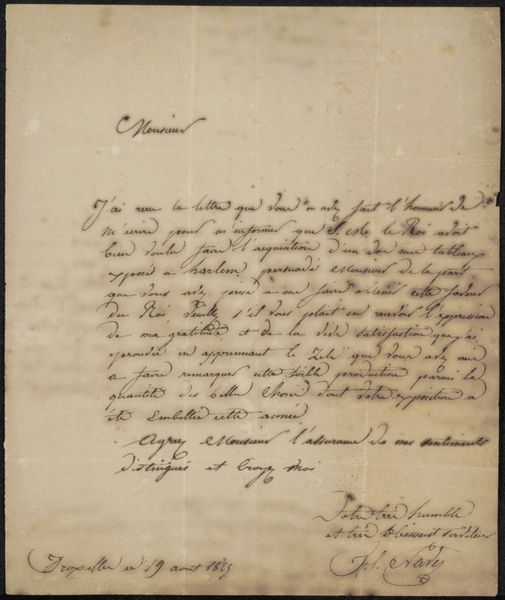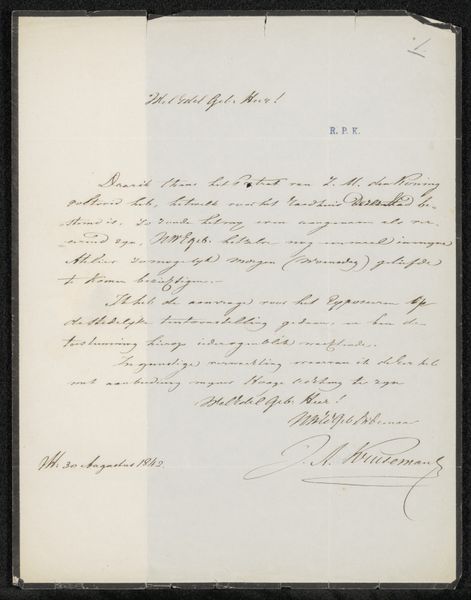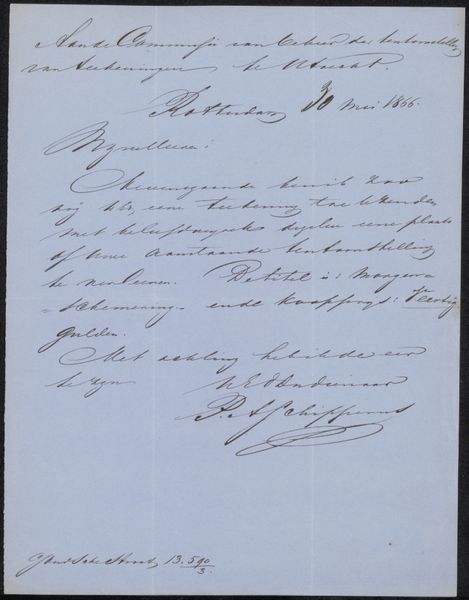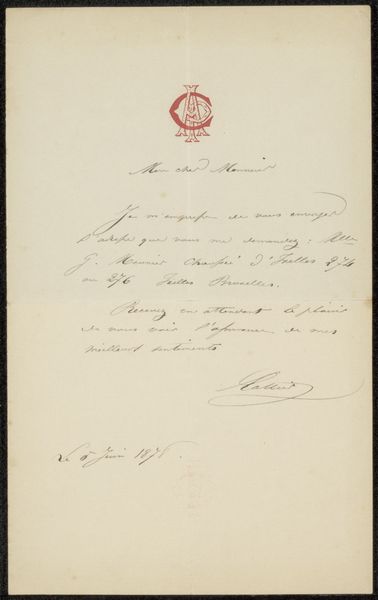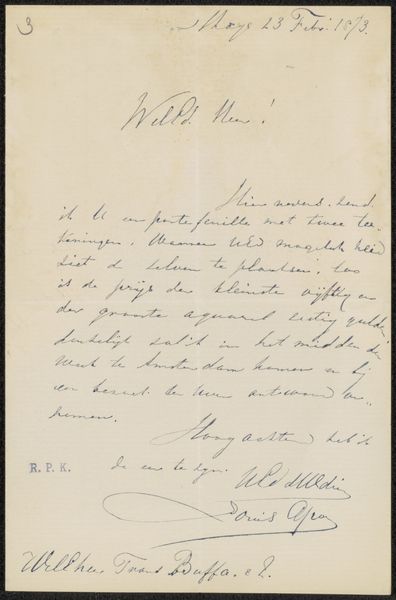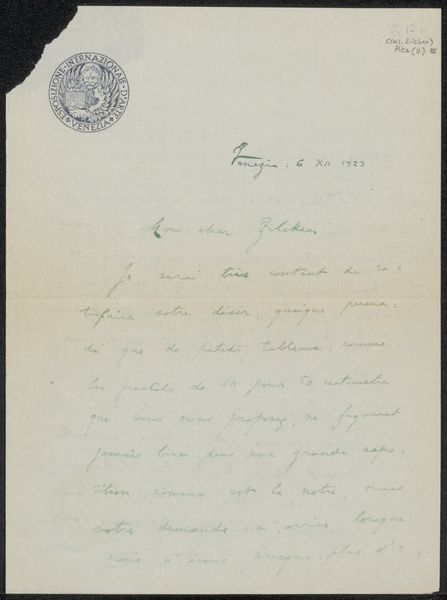
paper
#
portrait
#
paper
#
history-painting
#
calligraphy
Dimensions: height 27.3 cm, width 21.6 cm
Copyright: Rijks Museum: Open Domain
Curator: Before us, we have a document entitled "Médaille de Sainte-Hélène," possibly from 1858, created by Engelbert Lucas. Editor: It looks like official correspondence. A bit worn and aged, judging by the discoloration of the paper, but possessing an undeniable graphic charm. I’m immediately drawn to the scripted elements. Curator: Yes, a close examination reveals it to be a handwritten and printed document. Note the embossed stamp near the top, adding to its materiality as an object with administrative purpose and social value. The text appears to be related to authorization for someone to wear the Saint Helena Medal. Editor: So, it’s a physical representation of authority, connecting an individual to a historical moment—specifically, those connected to Napoleon and his campaigns. I wonder, who was J. van Adrichem, and what was his relationship to Napoleon? The object serves to commemorate these historical actors within a formal social and political framework. Curator: Fascinating questions! The creation and awarding of this medal also invites considering labor and consumption in the construction of collective memory, doesn’t it? Think about the social context, the cost of producing such documents, and the accessibility of honors during that time. The act of documentation and inscription as tools of control, as mechanisms to define and reinforce societal structure. Editor: Exactly! And the document format becomes almost performative. Awarding honors to perpetuate the narratives deemed valuable by those in power. This really underscores how objects—even simple documents—play a critical role in shaping historical memory. Curator: Indeed. It is about both acknowledging an individual, and broadcasting their connection with a celebrated historical project, Napoleon. It’s a printed piece, a sign of legitimacy in bureaucracy. It speaks of material production for social manipulation. Editor: A fascinating look into the interplay of individual recognition and broader historical narratives, presented through a physical object of record. Curator: It certainly compels us to reflect on how seemingly straightforward materials can embody much larger systems.
Comments
No comments
Be the first to comment and join the conversation on the ultimate creative platform.
